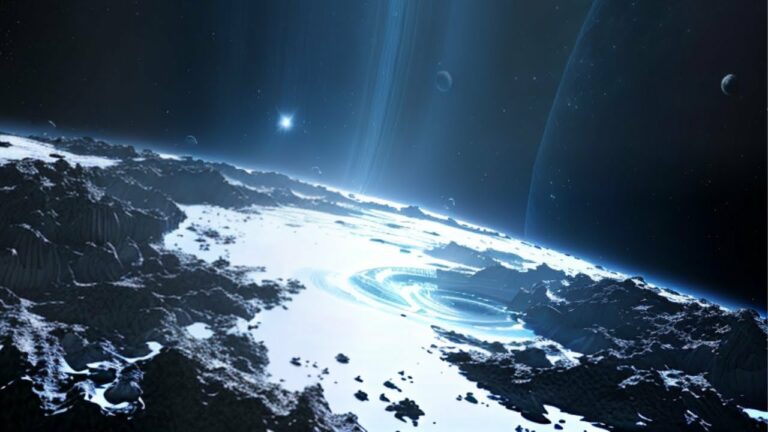NASA Breaks the Silence! James Webb Telescope Discovers “Ocean World” on Saturn’s Moon Enceladus!
Enceladus is one of Saturn’s most intriguing moons due to its unique and dynamic features. Here are some key facts and features about Enceladus:
- Discovery: Enceladus was discovered by the British astronomer William Herschel on August 28, 1789.
- Size and Location: It is a relatively small moon, with a diameter of approximately 504 kilometers (313 miles). Enceladus orbits Saturn at a distance of about 238,000 kilometers (148,000 miles).
- Surface: Enceladus has a highly reflective surface, primarily composed of water ice. This gives it a brilliant, white appearance and contributes to its high albedo (reflectivity).
- Geysers: One of the most intriguing features of Enceladus is its geysers. These geysers of water vapor and ice particles erupt from “tiger stripe” fractures on the moon’s south pole. The source of this activity is thought to be a subsurface ocean beneath the icy crust.
- Subsurface Ocean: Data from the Cassini spacecraft, which studied Saturn’s system for over a decade, strongly suggests the presence of a global subsurface ocean on Enceladus. This ocean is believed to be in contact with the moon’s rocky mantle and may harbor conditions conducive to life.
- Cryovolcanism: The geysers and associated activities are believed to be a result of cryovolcanism, where water and ice erupt like lava does on Earth’s volcanoes. This process could play a crucial role in maintaining the moon’s surface and potentially nurturing microbial life.
- Potential for Life: The presence of liquid water, a subsurface ocean, and the release of organic compounds from the geysers have led scientists to consider Enceladus as one of the top candidates for the search for extraterrestrial life in our solar system. The conditions may be suitable for microbial life to exist.
- Cassini Mission: Much of what we know about Enceladus comes from the Cassini-Huygens mission, a collaborative effort between NASA, the European Space Agency (ESA), and the Italian Space Agency. The Cassini spacecraft conducted numerous flybys of Enceladus, studying its geysers, surface, and subsurface ocean in detail.
- Tidal Heating: The heat required to keep the subsurface ocean from freezing is thought to be generated through tidal forces. Saturn’s gravity causes the moon to flex and release heat, maintaining the liquid water.
-
Future Missions: Scientists are eager to further explore Enceladus and its potential for life. Future missions are being considered to return to this intriguing moon to gather more data and potentially search for signs of life in its subsurface ocean.
Enceladus is a captivating world, offering scientists a tantalizing opportunity to learn more about the potential for life beyond Earth within our own solar system.
Finally, NASA breaks its silence: Yes, there is an ocean world on Saturn’s moon Enceladus! This gives us a hot candidate for life in the solar system.
Enceladus is one of Saturn’s largest moons and is bubbling with ice volcanism.
But that’s not all, this moon also hosts one of the largest saltwater oceans in the entire solar system.
Do not forget to share your opinion with us to provide you with the best posts !




0 Comments